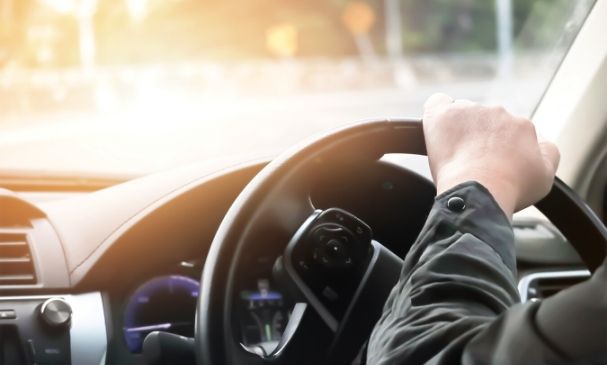8 Tips for Becoming a Safer Driver

For many people, driving is a major part of everyday life. From commuting to work to picking up friends or family, we often get into our cars without a second thought about potential driving dangers. Fortunately, you can reduce that danger by practicing safer habits behind the wheel. Here are eight tips for becoming a safer driver for you, your family, and everyone else you meet on the road.
Drive Defensively
You may have heard of driving defensively, but what exactly does that mean? Defensive driving is when you take precautions behind the wheel to prevent an accident due to dangerous drivers, weather conditions, or other road hazards. In fact, the tips in this list are mainly defensive driving tips. Generally speaking, a defensive driver is always aware of others on the road and plans for the worst-case scenario. While you don’t want to be tense or nervous while driving, preparing for other people’s aggressive or unexpected moves will make it easier for you to react safely. While on the road, leave ample space between yourself and the car in front of you in case you have to brake. Stay alert and pay constant attention to your surroundings so you can be ready to deal with any situation that arises.
Know the Rules in Your State
Every state has its own driving laws. Some states require a driver’s education course before you can get your license. Texting and driving might be banned, partially banned, or completely legal depending on where you live. Even universal rules—like not driving under the influence of alcohol or other drugs—have some details that vary from state to state. For example, if you get a DUI in Washington, you will likely need SR22 insurance. However, this may not be the case in other states. Make sure you’re always up to date on the driving laws, regulations, and consequences in your state.
Cut Down on Distractions
While aggressive drivers can be a danger, distracted drivers are also a safety hazard. Things happen quickly on the road—looking away for a moment can cause you to miss another driver braking, a traffic sign or light, or any other unexpected obstacles. Do your best to minimize distractions while driving. Turn off or silence your phone and keep it where you won’t see it and be tempted to answer any messages or calls. If you need to have your phone out for directions or for taking a call, get a stand that lets you place your phone on your dashboard. This way, you can glance at the phone for directions without fully taking your eyes off the road. Bluetooth stereo systems or other methods of hands-free calling are also huge helps when it comes to driving safety.
Avoid Driving When Tired
Because staying alert is a big part of staying safe, it’s important to never drive when you’re tired or otherwise unfocused. If you’re under conditions that will make you drowsy behind the wheel, such as lack of sleep, new medication, or a cold, then it’s a good idea to stay off the road or find an alternative ride. If you’re on a long car ride and find yourself falling asleep at the wheel, pull over to a gas station or rest stop and take a short nap. Even just exiting your car and walking around for a little bit can help wake you up more.
Plan Ahead
One of the biggest tips for becoming a safer driver is to stay calm while you’re on the road. If you plan ahead before you leave—no matter where you’re going—you can eliminate many stressors during your drive. Look up your route beforehand so you know where you’re going. Plan on leaving early so you aren’t speeding to avoid being late. Prepare any snacks, music, or other potential distractions so they’re easy-to-access and won’t take up your attention when you reach for them.
Stick to the Basics
As simple as it seems, basic driving rules are there for a reason. If you want to be a safer driver, take it back to the basics. Obey all speed limits and other traffic signs. Always look in every direction before making a turn, and don’t forget to regularly check your mirrors. When driving, keep both hands on the wheel in a comfortable position and wear your seatbelt. Leave space between you and the driver in front of you so you have a safe braking distance. It’s easy to cut corners on these rules as you gain more experience driving, but obeying them will make the road a safer place for you and everyone else you come across.
Don’t Overcorrect
While you can be as safe a driver as possible, some things are out of your control. If you come across a bad driver or hazardous road conditions, there are still a few things you can do to prevent or minimize damage. Avoid slamming on your brakes. While it’s instinctive to want to stop when you see danger ahead, braking hard can lead to spinning and losing control. Instead, brake gently or coast while steering out of harm’s way. Don’t jerk the steering wheel, either. Make small corrections so you can get out of danger without swerving or losing control.
Know What to Do in an Accident
Of course, many things are out of our hands when it comes to driving. Apart from driving safely, you should also know what to do if an accident does happen. Every time you get in the car, make sure you have all the paperwork you need on hand. This includes auto insurance cards, the vehicle’s registration, and your driver’s license. After a wreck, the most important thing is to stay calm. If you can, move your car to the side of the road and out of the way. Exchange insurance information with anyone else involved in the wreck. Always know who to call if you need a tow. If you’re prepared with all this knowledge, you have a better chance of staying calm and taking care of things during an accident.


Recent Comments